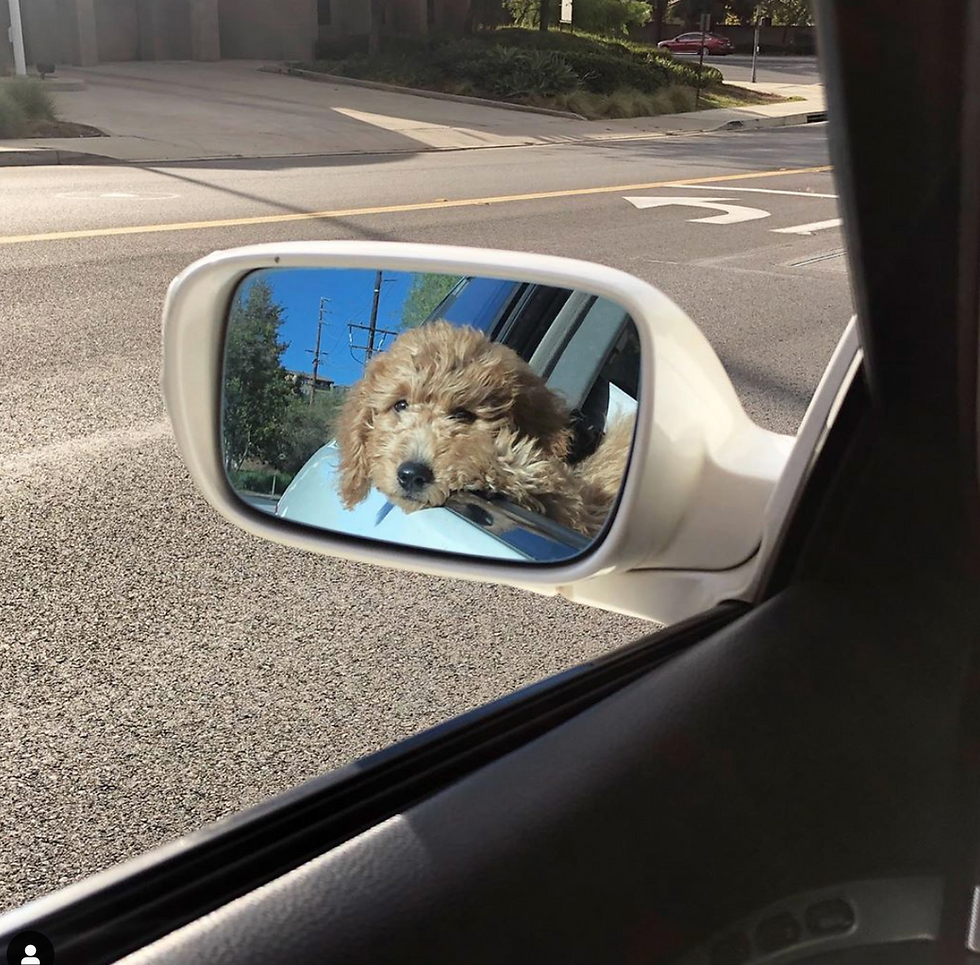The Difference between F1 and Multigen Goldendoodles
- April Power
- 5 days ago
- 2 min read
Families message me all the time saying their friend bought an F1B or multigen mini Goldendoodle that was adorable as a puppy, but by the time it was fully grown, the coat had changed completely. The tight curls, the matting, the poodle look, the constant shave-downs. It’s a very common experience, and it surprises a lot of people.
Since I raise F1 English Mini Goldendoodles, I want families to understand why some doodles stay beautiful and easy to maintain as adults while others become extremely high-maintenance.
This isn’t about criticizing other breeders. It’s simply the truth about generations, genetics, and coat types, and why the F1 English lines I raise produce such consistently beautiful adult coats.
The Truth About F1B and Multigen Coats
Strong poodle genetics
F1B and multigen doodles are typically around 75% poodle. That means more curl, more density, and more coat growth. These dogs often lose the fluffy teddy-bear look and begin to look more like mini poodles as adults. Their coats grow continuously and trap moisture, which leads to matting.
The coat change at 9–16 months
All doodles go through a coat transition, but F1B and multigen dogs go through a dramatic one. The puppy coat sheds out, and the adult coat grows in thick, tight, and curly. This is when most families suddenly notice mats forming underneath the top layer.
Grooming demands
Because the adult coat is dense and curly from root to tip, it mats quickly. Families often find themselves scheduling grooming every 6 to 8 weeks. Many groomers say F1B and multigen coats are the hardest to maintain of all doodle generations. When matting becomes severe, a full shave-down is often the only option, and the dog temporarily looks even more poodle-like.
Why My F1 English Mini Goldendoodles Grow Up Beautiful
My F1 English lines are the opposite experience. Families who have previously owned an F1B or multigen notice the difference immediately.
English retriever coat influence
English Golden Retrievers have thick, silky coats and wider heads. When paired with a high-quality mini poodle, the result is a soft wavy F1 coat that stays plush and pretty instead of becoming tight and wool-like.
Easier maintenance
F1 coats tend to be much easier to care for. They don’t mat as quickly, they handle length well, and they stay fluffy without constant trimming. Families regularly tell me they brush their dog only a few times a week and never deal with deep matting.
Consistent genetics
My parent dogs come from imported English lines and have calm, gentle, predictable temperaments. I select for coat quality, structure, and health testing so my puppies grow into the classic teddy-bear English doodle look that lasts into adulthood.
What you see is what you keep
Many families buy an F1B or multigen puppy for the adorable wavy baby look, but that look doesn’t stay past the first year. With my F1 English puppies, the teddy-bear expression, the soft wave, and the overall look remain through adulthood. They don’t transition into a tight, poodle-type coat.
See the difference below!





Comments